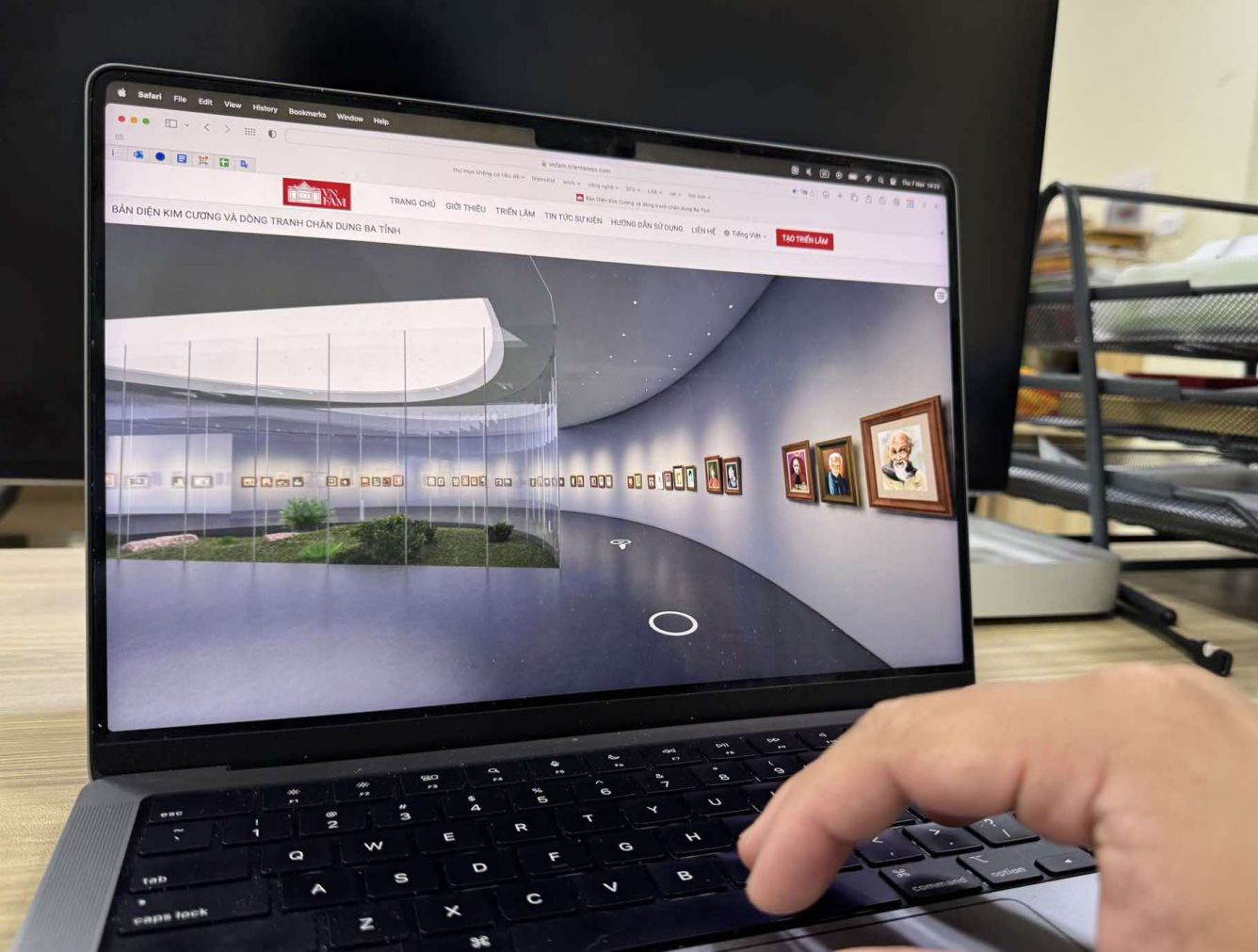These applications not only enhance the experience for tourists but also attract a large number of young people to explore culture and history in a modern and engaging way.
QR application - increase interaction for tourists
In recent years, QR code technology has become an important element in the visitor experience at museums in Vietnam. A typical example is the Hoa Lo Prison Relic in Hanoi, which has deployed an automatic QR code commentary system since 2019. With this technology, visitors only need to use their personal phones to scan the code and select the language, thereby being able to listen to the commentary about each artifact without the need for a live tour guide. This not only creates convenience but also allows viewers to explore the artifacts at their own pace, providing a more proactive and free experience.
The integration of QR codes at attractions such as Hoa Lo Prison has made it easier for tourists, especially young people and international visitors, to access rich historical stories. Each artifact in the museum is now not just an antique but also a vivid story, personalized to each person's experience, helping to create a deep impression and strong emotional connection with the viewer.
Similarly, at the Ho Chi Minh City Museum of Fine Arts, QR codes are applied to works of art, making it easy for visitors to find information via their phones. Some works are also displayed in 3D, providing a more realistic and multidimensional perspective for viewers. Thanks to that, QR code technology has contributed to making the museum space more intimate and providing a deeply personalized experience.
Experiential technologies - bringing museums closer to the younger generation
In addition to QR codes, other digital technologies such as virtual reality (VR), 3D simulations and touch screens are also being strongly applied by museums in Vietnam. At the Vietnam Military History Museum, many artifacts have been digitized and the museum has also built a 3D digital museum about the life of General Vo Nguyen Giap. 3D technology allows visitors to experience space and artifacts from a multidimensional perspective, as vivid as if standing in front of real artifacts. In particular, the games simulating driving tanks, controlling airplanes or experiencing simulated battles here have helped viewers, especially young people, better understand Vietnam's military history in an intuitive and vivid way.

The Vietnam Women's Museum also applies digital technology to the visiting experience, with a touch screen system that helps viewers easily look up information about historical periods and stories related to Vietnamese women. In addition, the museum also provides a 360-degree tour that allows visitors to visit online remotely, creating favorable conditions for those who cannot come directly, especially during the period of social distancing. This not only helps the museum maintain its connection with the public but also opens up opportunities to explore culture remotely, contributing to a new and flexible experience.
Da Nang Museum is also one of the pioneering museums in applying VR technology to recreate famous relics of the city such as Ngu Hanh Son, Hai Van Quan and Thanh Dien Hai. VR technology allows viewers to explore these relics through a realistic 3D perspective, helping to better understand the cultural and historical heritage of Da Nang. The museum also integrates QR codes for visitors to easily look up information about artifacts, bringing convenience and adding liveliness to the tour.
The Vietnam Museum of Ethnology offers VR tours so visitors can explore the culture of 54 ethnic groups through virtual reality. With VR, visitors can learn about the culture, customs and values of each ethnic group in a vivid and engaging way. QR code technology is also used to provide detailed information about artifacts, helping the public to feel more deeply the cultural diversity of Vietnam. These technologies have made historical and cultural stories more accessible, especially attracting the interest of young people.
Technological innovations in Vietnamese museums go beyond the preservation and conservation of artifacts to turn them into creative spaces for discovery. Each technology applied brings new ways of transmission, making museums educational, fun and engaging destinations. Modern solutions such as QR codes, VR and 3D projections not only enhance the visitor experience but also open up new directions for the preservation and promotion of cultural heritage.
In the digital age, integrating technology into museums is not only a step forward in modernization but also a way for museums to become a bridge connecting generations, helping young people understand and appreciate the cultural heritage of the nation. Experiences from museums are not only entertaining but also arouse curiosity and passion for exploring history and culture of young generations, thereby inspiring and spreading heritage values in a strong and sustainable way.










